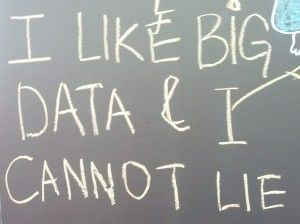Gradiant |
The question of how can the collection and subsequent analysis of data help decision making processes is meaningless nowadays. We’ll all agree on that point.
Making informed decisions, both strategic and operational, has become an essential tool for companies and organizations. And like everything else, this has changed quickly but progressively: from being a process based on experience – and even almost on intuitions – to be increasingly supported almost entirely on Data Analytics. Make decisions this way allows more streamlined processes; make managers most likely to identify gaps and opportunities; and makes it possible to react or -even better- to anticipate to market demands. According to a recent study of the OBS Business School, Big Data and Data Analytics technologies are crucial in business: three-quarters of the organizations surveyed recognize their impact on the annual income: 7
So, long story short: we all seem to agree that Big Data is valuable. But in order to make it useful, organizations must know how to store, identify, classify, read and ultimately apply a layer of intelligence on top of them, that enables useful conclusions. Something as complicated as finding a needle in a haystack. Or rather, like searching for a particular needle in 100,000 haystacks… made of needles.
To put the (sure-not-that-good) metaphor in numbers: Over the past two years, humanity has generated more information than in the entire history of mankind. More than two billion people use social networks every day on our planet, generating information about their likes, dislikes, hobbies, recommendations, shopping, trends… Gold intelligence for any company. Therefore of course, companies must know how to extract that gold from all these data, because no byte out of all those millions of Tbs of information is structured or makes any sense all by its own: 8
The sentiment analysis is possibly the most used technique for making decisions based on data from social networks. This analysis is «the process of determining and measuring the tone, attitude, opinion or emotional state of answers, deciding whether a conversation or opinion is positive, negative or neutral.»
Technologies such as Natural Language Processing are key when extracting meaningful information from these data. New technologies to manage and process large volumes of information (Big Data), both real-time and batch. Artificial Intelligence (AI) and Machine Learning technologies are able to learn and adapt to information that is so complex and diverse.
A good example for that is Glik, our Social Media Data Analytics Tool (for Customer Listening). Glik provides core intelligence on brands, products or services. Among other things, Glik reveals key information from texts extracted from social networks, through grouping of texts according to their subject, extraction of semantic polarity (positive, negative or neutral messages), and the discovery of the goal and the object of interest (complaints, needs, recommendations, jokes, acquisitions) that users publish on there.
For more information: Glik: Customer listening
Eforos: Intelligence for Content Marketers
Talk to us: comercial@gradiant.org




